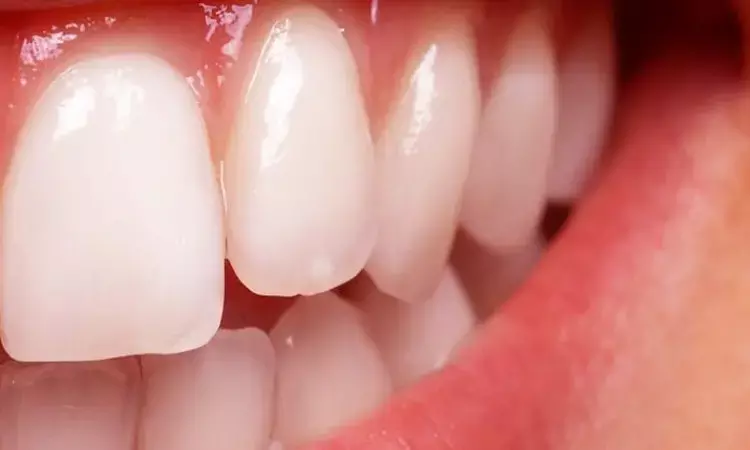- Home
- Medical news & Guidelines
- Anesthesiology
- Cardiology and CTVS
- Critical Care
- Dentistry
- Dermatology
- Diabetes and Endocrinology
- ENT
- Gastroenterology
- Medicine
- Nephrology
- Neurology
- Obstretics-Gynaecology
- Oncology
- Ophthalmology
- Orthopaedics
- Pediatrics-Neonatology
- Psychiatry
- Pulmonology
- Radiology
- Surgery
- Urology
- Laboratory Medicine
- Diet
- Nursing
- Paramedical
- Physiotherapy
- Health news
- Fact Check
- Bone Health Fact Check
- Brain Health Fact Check
- Cancer Related Fact Check
- Child Care Fact Check
- Dental and oral health fact check
- Diabetes and metabolic health fact check
- Diet and Nutrition Fact Check
- Eye and ENT Care Fact Check
- Fitness fact check
- Gut health fact check
- Heart health fact check
- Kidney health fact check
- Medical education fact check
- Men's health fact check
- Respiratory fact check
- Skin and hair care fact check
- Vaccine and Immunization fact check
- Women's health fact check
- AYUSH
- State News
- Andaman and Nicobar Islands
- Andhra Pradesh
- Arunachal Pradesh
- Assam
- Bihar
- Chandigarh
- Chattisgarh
- Dadra and Nagar Haveli
- Daman and Diu
- Delhi
- Goa
- Gujarat
- Haryana
- Himachal Pradesh
- Jammu & Kashmir
- Jharkhand
- Karnataka
- Kerala
- Ladakh
- Lakshadweep
- Madhya Pradesh
- Maharashtra
- Manipur
- Meghalaya
- Mizoram
- Nagaland
- Odisha
- Puducherry
- Punjab
- Rajasthan
- Sikkim
- Tamil Nadu
- Telangana
- Tripura
- Uttar Pradesh
- Uttrakhand
- West Bengal
- Medical Education
- Industry
Direct pulp capping or partial pulpotomy effective treatment of Carious Pulp Exposure in Reversible Pulpitis: Study

A new study published in the Journal of Endodontics revealed that teeth with reversible pulpitis and carious pulp exposure can be effectively treated using either direct pulp capping or partial pulpotomy, based on the intraoperative evaluation of the exposed pulp.
This double-blind, parallel randomized trial evaluated 140 mature permanent teeth in patients exhibiting either no symptoms or symptoms consistent with reversible pulpitis. The participants were randomly assigned to receive either direct pulp capping (67 teeth) or partial pulpotomy (73 teeth). All procedures were performed under magnification, with careful intraoperative hemostasis, and the same bioactive material (NeoPUTTY MTA) was used as the pulp capping agent.
Follow-up assessments were scheduled at 6 and 12 months, with both clinical and radiographic examinations performed to assess treatment success. Pre-treatment symptoms were present in roughly half of the cases (74 out of 140 teeth), with no statistical difference between the groups in terms of initial pain levels (p=0.75). Both treatment modalities resulted in significant pain reduction after one week (p<0.001), confirming short-term relief.
At the 6-month follow-up, failure was observed in 10 cases of direct pulp capping and 4 cases of partial pulpotomy. This translated to success rates of 94.4% for partial pulpotomy and 84.4% for direct pulp capping, a difference that approached but did not reach statistical significance (P=0.057).
At the 12-month mark, an additional two failures were reported in each group, yielding final success rates of 91.5% for partial pulpotomy and 81.3% for direct pulp capping. Again, while these findings suggested a trend favoring partial pulpotomy, the difference was not statistically significant (P=0.08).
Multivariate regression analysis revealed no significant prognostic indicators influencing treatment outcomes for either technique, which reinforced that both are viable options depending on case-specific clinical judgment.
The results suggest that partial pulpotomy may offer a marginally higher success rate in treating reversible pulpitis in cariously exposed mature permanent teeth. Both treatments showed excellent pain reduction and high success rates, but the slightly improved durability of partial pulpotomy may guide clinicians when choosing between the two, especially when pulp vitality is confirmed and bleeding is well-controlled.
Overall, the findings underline the importance of intraoperative evaluation and reinforce that, in the absence of firm guidelines, clinical discretion remains key in selecting the appropriate therapy.
Source:
Taha, N. A., Jaradat, H. B., DkmaK, A., & Abidin, I. Z. (2025). Carious pulp exposure in mature teeth with reversible pulpitis: a randomized clinical trial of direct pulp capping and partial pulpotomy. Journal of Endodontics. https://doi.org/10.1016/j.joen.2025.06.019
Neuroscience Masters graduate
Jacinthlyn Sylvia, a Neuroscience Master's graduate from Chennai has worked extensively in deciphering the neurobiology of cognition and motor control in aging. She also has spread-out exposure to Neurosurgery from her Bachelor’s. She is currently involved in active Neuro-Oncology research. She is an upcoming neuroscientist with a fiery passion for writing. Her news cover at Medical Dialogues feature recent discoveries and updates from the healthcare and biomedical research fields. She can be reached at editorial@medicaldialogues.in
Dr Kamal Kant Kohli-MBBS, DTCD- a chest specialist with more than 30 years of practice and a flair for writing clinical articles, Dr Kamal Kant Kohli joined Medical Dialogues as a Chief Editor of Medical News. Besides writing articles, as an editor, he proofreads and verifies all the medical content published on Medical Dialogues including those coming from journals, studies,medical conferences,guidelines etc. Email: drkohli@medicaldialogues.in. Contact no. 011-43720751


